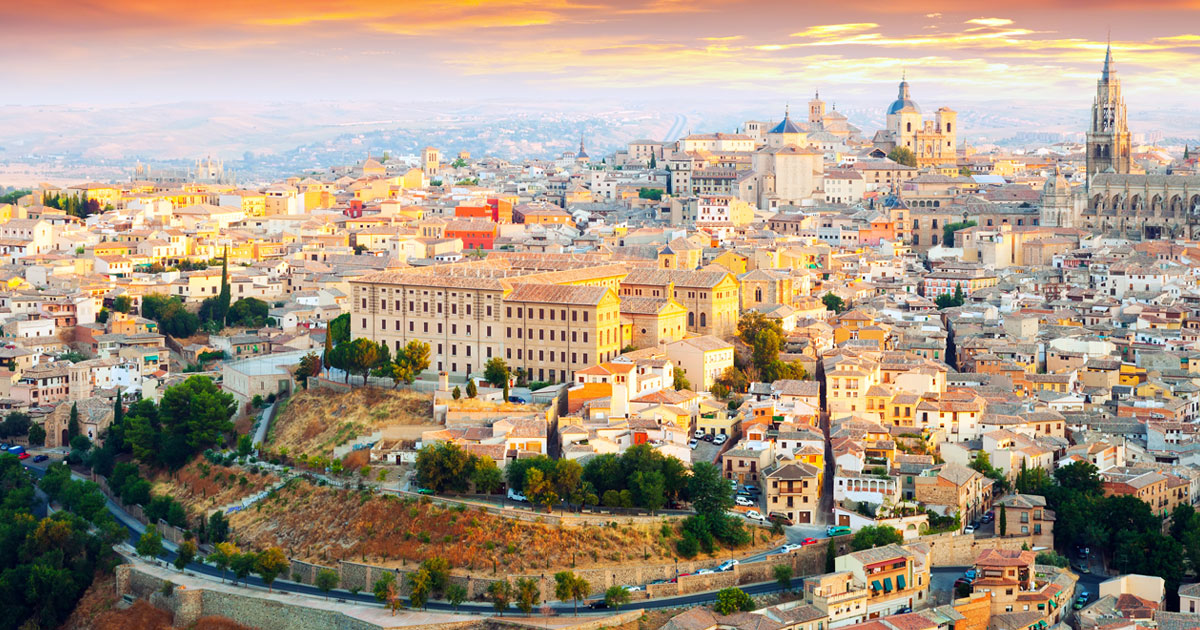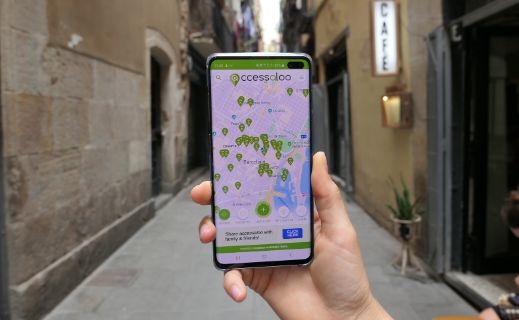Have you ever wondered which top highlights in Spain are accessible for wheelchair users? From the most famous work from Gaudí to the Alhambra in Granada. This ultimate Cultural Highlights of Spain list provides all the information you need for a barrier-free visit. Explore these amazing sites by yourselves, or join us for an unforgettable private tour. With this list, you can prepare and know exactly what to expect.
Sagrada Família – Barcelona
The first must-see on this cultural highlights of Spain list is the world-famous and incredibly popular Catholic Basilica that is designed by the equally famous architect Antoni Gaudí. Sagrada Família means holy family. And up until this day the works are still going on. The expectations are that the church will be completed around 2026.
What to see?
From the outside, you see the four different Facades, that are called the Facade of Glory, the Facade of the Adoration (also called facade of the Suffering and Passion), and the Facade of the Nativity. The latter was the first completed outer facade. This is also where you enter the basilica. There are three entrances: central “the gate of mercy”, on the left “the gate of hope” and on the right “the gate of faith.”
In the center of this architectural masterpiece, they are creating the most prominent bell tower that becomes the symbolization of Jesus. Around the highest tower, there will be four others symbolizing the four evangelists. Above the apse is the tower that refers to the Blessed Virgin Mary. To the already existing eight towers, an additional four will be added, which will then all together symbolize the 12 apostles.
From the inside
In contrast to the outside, the interior is mostly finished. The interior contains five naves of the central nave, various chapels, the apse, the claustrum, two vestibules on either side, the main altar, and a crypt. During the day, when the sun shines, you are treated on beautiful colors that sparkle through the stained glass.

Accessibility of the Sagrada Família
To find the wheelchair accessible entrance, you are guided to the back-side of the basilica. When you arrive, members of staff help you get passed the turnstiles. Inside there is no particular route for wheelchair users to follow, as the Basilica throughout is fully accessible. The floor is smooth, ramps are placed where needed, and there is plenty of space to maneuver. Accessible toilets are available throughout the premises.
Access to the towers is unfortunately not accessible for wheelchair or scooter users. There is an elevator, however to access this, you need to take a few steps. Fortunately, the church is gorgeous, and you are not missing out when only visiting the ground floor. From this area, you can also visit the museum, which is accessible via a ramp.
Do you want to visit the Sagrada Familia, and do you need more information about the accessibility? Check out this blog that is fully dedicated to this awe-inspiring basilica.
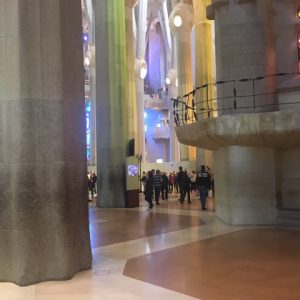


Guggenheim – Bilbao
The second on the Cultural Highlights of Spain list is the Museo Guggenheim Bilbao. This museum is an absolute must-see for lovers of modern art and architecture, and has been flaunting the city of Bilbao on the Nervión River since 1997. They built this impressive structure in a construction period of no less than four years with an investment of approximately $100 million, paid by the Basque government. The Guggenheim Museum in Bilbao receives over 1 million visitors per year, making it by far the most important attraction of Bilbao and the Basque Country.
Around the museum
The Guggenheim is unusual in many aspects. Not only on the inside are you able to enjoy art in many ways. You can also walk around the building where you find various works such as the mirrored bowls from Anish Kapoor, the balloon puppy from Jeff Koons, or the Spider made by Louise Bourgeois.
Inside the Guggenheim
This museum is amazingly designed also from the inside. Less abstract, and very interesting! When you enter the Guggenheim, you enter a large hall that is about 50 meters high. This part of the museum, the atrium, is also called the heart of the museum. The conceptual pillars and shapes, in combination with the skylights, create a sparkling dance of light reflections on the museum floor.
The Guggenheim mainly exhibits works from the twentieth and twenty-first centuries. In addition to the various exhibitions, the permanent collection of the museum also offers art made by well-known artists. Willem de Kooning, Anselm Kiefer, Yves Klein, and Andy Warhol, among others, are on this list. Their works of art are distributed over 11,000 square meters, divided into twenty galleries.

Accessibility Guggenheim
When creating this impressive building, they cared deeply about making it accessible to everyone. All services and activities are adapted so that everyone can enjoy it. As the main entrance has steps, an accessible entrance at the back-side of the building is created, which you can open automatically using the push buttons. Once inside, several widened elevators bring you to the different floors. Furthermore, the floors inside are fully flat and easily rollable, no thresholds, the exhibition areas are extremely spacious, and there are fully adapted bathrooms throughout the building. Check accessaloo to see the actual facilities.
Want to know more? Read our blog with all the information you need about this gorgeous building in Bilbao.
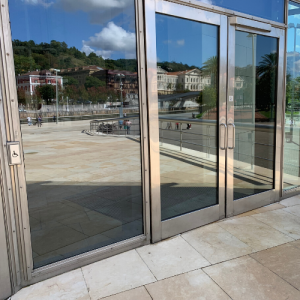

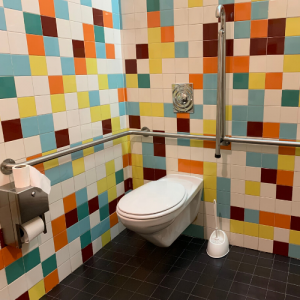
Mezquita – Cordoba
If you visit Córdoba, there is one monument that you should not miss: the Mezquita, located a stone’s throw from the Jewish quarter (judería). No other monument is such a symbol of the diverse culture of Spain and the religious evolution that the country has undergone than the Mezquita. Today there is a cathedral inside the mosque. This mixture of two cultures ensures that you enjoy an impressive and absolute unique piece of architecture.
The long history has guaranteed that the current Mezquita has enormous diversity in terms of architecture. From the 1200 columns, there are still 860 left to be admired. Hidden between these columns, you find the beautiful house of prayer. While you walk/roll through the columns, do not forget to look up. The dome is beautiful and marks the highest point of the house of prayer.
Moreover, you find the impressive bell tower in the Mezquita. This architectural gem shows the various functions of the building throughout the years. Before the tower became a bell tower, it served as a minaret for the Moors.

Accessibility Mezquita
Throughout several eras, the Mezquita has changed a lot. New parts have been added, and in those days, there were different standards when it comes to accessibility. Yet, the Mezquita is very accessible for wheelchair users. They have created a special entrance that is accessible, which you find on Torrijos street. Inside there are ramps places for easy access, and there are adapted bathrooms.
The Mezquita has much more to offer than you would think. Want to know more and plan your visit? Click here!
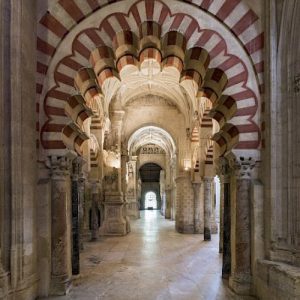

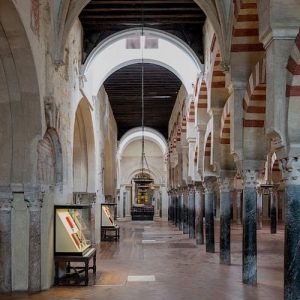
Alhambra – Granada
Near Granada, you find the world-famous Alhambra fortress. This ancient fortress is one of the most prestigious buildings in the world. Today you can still find structures that originated from the thirteenth century. The Red Palace, as the Alhambra is also called, is a unique building with traces of a long period of European history\, with its long past of different cultures and influences. The location mainly served as a fortress and palace where you find traces from the Islamic world and the Christian world. Sometimes you find styles from both worlds in one object. Therefore, it should come as no surprise that the Alhambra is listed as UNESCO world heritage.
Plan your visit to the Alhambra
If you plan a visit to the Alhambra, make sure to visit its most outstanding monuments and buildings. Do not miss out on visiting the Alcazaba and the towers surrounding the original citadel. Besides these towers, the Generalife gardens are also a must-see! They are characterized by an attractive roller of paths, patios, fountains, ponds, trees, plants, and flowers — an experience for all your five senses.
Be sure to explore the Nasrid Palaces afterward, which are still considered the pinnacle of Islamic culture in Europe today. Here you find the 13th-century palaces Le Mexuar, Comares, and the Palacio de Lion, which have been used as royal residences for centuries. The latter also boasts the breathtaking Patio de Los Leones, a patio surrounded by 124 marble columns, whose central fountain is symbolically characterized by 12 marble lions.

Accessibility of the Alhambra
To access the Alhambra with a wheelchair, you can go through the main entrance or the port of Justice. There is a special route for wheelchair users that makes the structure accessible for the most part. As there are many steps and level changes, there are some areas that you cannot visit as a wheelchair user. Ramps are placed throughout the building for easy access, there are adapted bathrooms, and they offer a free wheelchair service.
The Alhambra has so much to offer that we cannot fit it all in this blog. Would you like to read more about what makes the Alhambra so unique, what parts are accessible, and plan a visit? Click here to discover more.
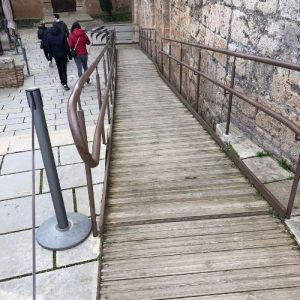
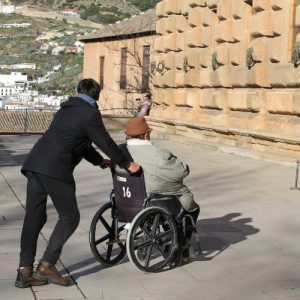

Roman Theater – Cartagena
The Teatro Romano is a reconstruction of what the ancient Roman theater must have looked like. The original copy still had columns and a porch that protected spectators and actors from sun and wind. There would also have been gardens around the theater in the past.
It is hard to believe, but for over 2000 years, the Teatro Romano was hidden a few meters deep underground. It was not until 1987 when a 19th-century palace was demolished that Corinthian columns were discovered and archaeologists set to work. During the Roman period, the theater was higher up on one of the hills surrounding the city. The structure is believed to date from the late 1st century BC, and there would have been room for about 7000 viewers. During the excavations, the archaeologists uncovered the remains of several civilizations. They discovered traces of the Visigoths, Byzantines, Moors, and the eventual reconquest by the Christians in the 13th century.
In the Museo del Teatro Romano, you can learn more about the rich history of the Roman theater through audiovisual material. You discover, for instance, that there was once a public market hall and a harbor that existed until the 13th century. To get to the museum, you take an underground corridor.

Accessibility of the Roman Theater
The last on this cultural highlights of Spain list is the amphitheater in Cartagena. Cartagena’s cultural organization has done a lot over the years to make the city and the Roman Theater more accessible. There are wheelchair accessible bathrooms scattered over the site. They eliminated barriers for easier access, installed escalators and lifts to reach the different floors, and there is a wheelchair rental service.
To visit the three-floor museum, you go to the upper floor with a wide elevator. After that, you continue through the tunnel to get to the real remains. Here you have a viewpoint for wheelchair users in the middle
Would you like to visit this classical amphitheater? Check out this blog and find out more about the accessibility, what kind of tickets they offer, how to get there, and more.
We hope you enjoyed reading about all these wheelchair accessible cultural highlights of Spain. In case you wish assistance with planning your visit or trip, contact us now!

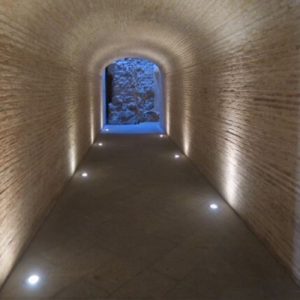

Get inspired, continue reading
- Wheelchair Accessible Cultural Highlights of Spain
- Explore Disabled Accessible Travel’s destinations
- Accessibility guide of Acropolis and Museum
- Disabled Accessible Travel Expands Accessibility Services with Launch of Mobile App ‘accessaloo’
- Wheelchair Accessible Transfers
- Accessibility of St. Petersburg
- Mobility Equipment Rentals
- 7 Wheelchair-friendly Restaurants in Barcelona
- Everything You Need To Know About Tipping In Europe
- Nova Icaria And 4 Other Accessible Beaches Barcelona Has To Offer
- Accessibility guide Alhambra
- Accessible Train Tickets in Spain – Renfe
- Accessible islands in Europe
- Top 8 Accessible Destinations in Europe
- Accessibility guide Parliament Budapest
- A useful guide to European toilet keys
